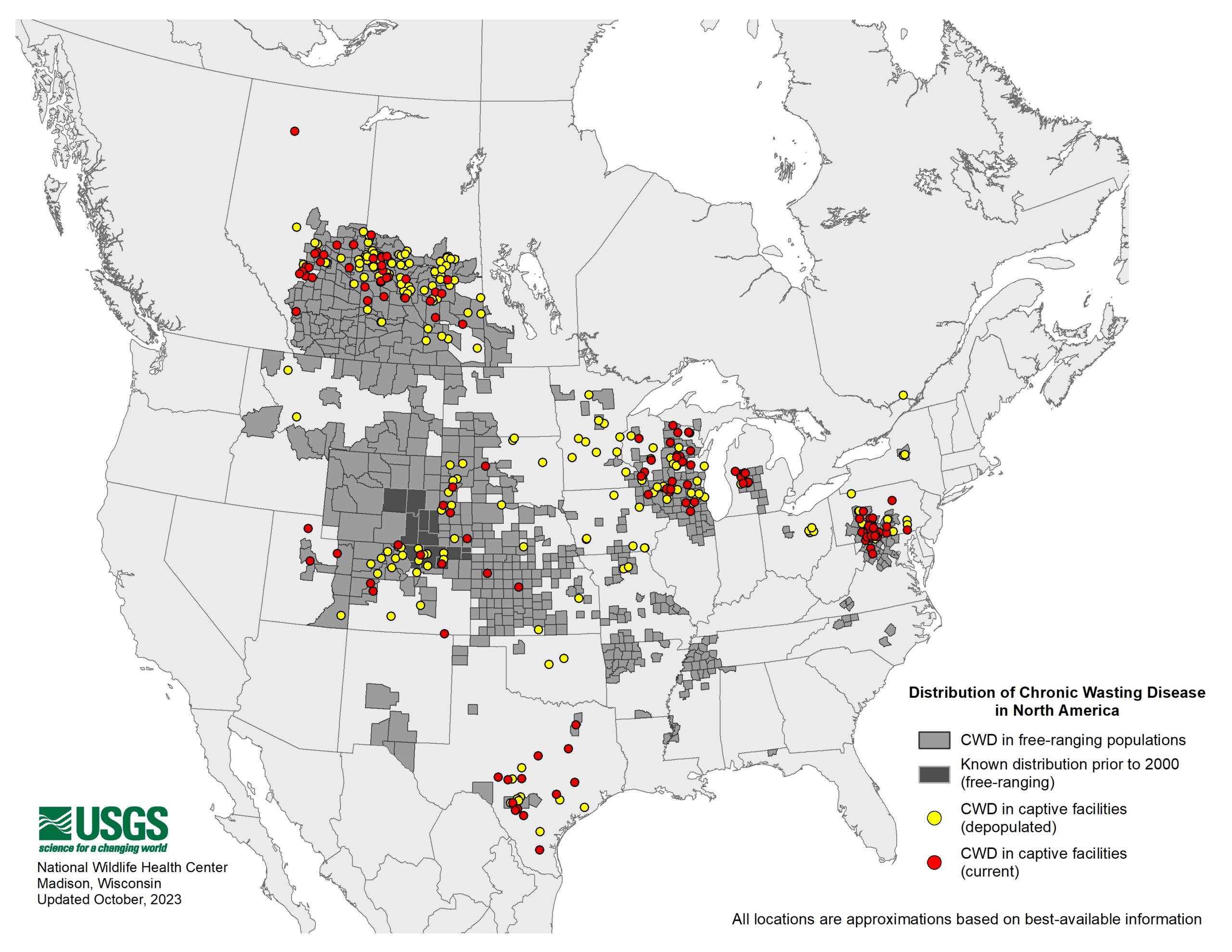Zombie Deer Disease: Could It Be the Next Threat to Humans?

By Derrick R. Stallings
In recent years, concerns about zoonotic diseases—those that jump from animals to humans—have been amplified by the global pandemic. Now, a chilling new warning from scientists has turned the spotlight on a lesser-known yet potentially alarming disease: chronic wasting disease (CWD), also ominously nicknamed “zombie deer disease.”
CWD, which affects deer, elk, and moose, is a prion disease—similar to mad cow disease—that causes neurodegenerative symptoms like weight loss, disorientation, and behavioral abnormalities. Infected animals often appear emaciated, dazed, and erratic, leading to the term “zombie deer.” While the disease has been confined to animals so far, some experts fear it may one day jump the species barrier and infect humans.
What Is Zombie Deer Disease?
Chronic wasting disease is caused by misfolded proteins called prions, which accumulate in the brain and other tissues, ultimately leading to fatal neurological damage. First identified in the 1960s in captive deer in Colorado, CWD has since spread across North America, affecting wild and farmed deer populations in over 30 U.S. states and several Canadian provinces. Cases have also been reported in South Korea and Scandinavia, indicating its potential to spread globally.
Prion diseases are notoriously difficult to manage because they are not caused by bacteria or viruses but by rogue proteins that trigger a chain reaction, causing healthy proteins to also misfold. These prions are nearly indestructible, resisting standard sterilization methods and remaining infectious in the environment for years.
Could Zombie Deer Disease Infect Humans?
While there are currently no confirmed cases of CWD infecting humans, researchers warn that this doesn’t mean it’s impossible. Laboratory studies have shown that the prions causing CWD can infect some non-human primates, such as macaques, when exposed through contaminated meat. This suggests a theoretical risk to humans, particularly those who consume infected deer or come into close contact with contaminated tissues.
In fact, CWD shares similarities with mad cow disease, which caused a fatal outbreak in humans (known as variant Creutzfeldt-Jakob disease) in the late 1980s and 1990s after people consumed infected beef. Although prions typically exhibit a strong species barrier, meaning they’re less likely to jump between different species, this barrier isn’t foolproof. Over time, as CWD continues to spread and mutate, the risk to humans could increase.
How Concerned Should We Be?
The potential for CWD to spread to humans may seem remote, but scientists are urging caution. They emphasize the need for:
- Monitoring and Research: Continued surveillance of CWD cases in deer and related species, as well as research into prion behavior and transmission mechanisms.
- Safe Hunting Practices: Hunters should avoid consuming deer that appear sick, test game meat for CWD, and use gloves when handling carcasses.
- Public Awareness: Educating the public about the disease, especially in regions where hunting and venison consumption are common.
Dr. Michael Osterholm, an infectious disease expert, has stated, “It is probable that human cases of chronic wasting disease associated with consumption of contaminated meat will be documented in the years ahead. It’s possible the number of human cases will be substantial and not isolated.”
What Can Be Done to Prevent Its Spread?
While there is no cure or vaccine for prion diseases, efforts to curb the spread of CWD in animal populations are underway. Wildlife agencies have implemented measures such as banning the transport of infected carcasses, regulating deer farms, and encouraging testing of hunted deer in high-risk areas.
On a larger scale, public health organizations are keeping a close eye on CWD, recognizing its potential to become a zoonotic threat. Early detection and proactive management could be key to preventing a crisis like the one caused by mad cow disease.
Final Thoughts
Zombie deer disease might sound like the stuff of horror movies, but it’s a real and growing concern for scientists, wildlife experts, and public health officials. Although the likelihood of CWD jumping to humans is uncertain, the parallels with past prion diseases serve as a sobering reminder of nature’s unpredictability.
For now, the best course of action is vigilance—both in monitoring CWD among animal populations and in taking precautions to minimize human exposure. As the world becomes increasingly interconnected, the importance of understanding and managing zoonotic risks has never been clearer.
By staying informed and proactive, we can mitigate potential risks and protect both wildlife and human health. But the question remains: could zombie deer disease become humanity’s next big challenge? Only time—and science—will tell.
*AI Helped To Create This Post
Discover more from HuntingOfficer
Subscribe to get the latest posts sent to your email.
